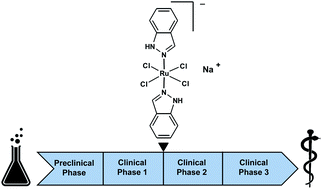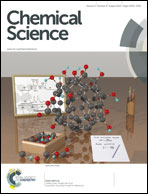NKP-1339, the first ruthenium-based anticancer drug on the edge to clinical application
Abstract
NKP-1339 is the first-in-class ruthenium-based anticancer drug in clinical development against solid cancer and has recently been studied successfully in a phase I clinical trial. Ruthenium compounds such as KP1019 (indazolium trans-[tetrachloridobis(1H-indazole)ruthenate(III)]) and NKP-1339 (the sodium salt analogue of KP1019, sodium trans-[tetrachloridobis(1H-indazole)ruthenate(III)]) have a high tumour targeting potential based (1) on their strong binding to serum proteins such as albumin and transferrin as well as (2) on their activation in the reductive tumour milieu. The redox activity of ruthenium compounds is believed to represent one major mode of action leading to disturbance of the cellular redox balance and, consequently, induction of G2/M cell cycle arrest, blockage of DNA synthesis, and induction of apoptosis via the mitochondrial pathway. Moreover, potent synergistic activities of NKP-1339 with the clinically approved tyrosine kinase inhibitor sorafenib were recently reported in vitro and in vivo. Taken together, KP1019 and NKP-1339 are promising drug candidates, and especially the very limited side effects observed so far in clinical phase I trials seem to be a major advantage of this class of ruthenium drugs as compared to other chemotherapeutics and targeted anticancer compounds.

- This article is part of the themed collection: Celebrating 15 years of exceptional research in Chemical Science

 Please wait while we load your content...
Please wait while we load your content...